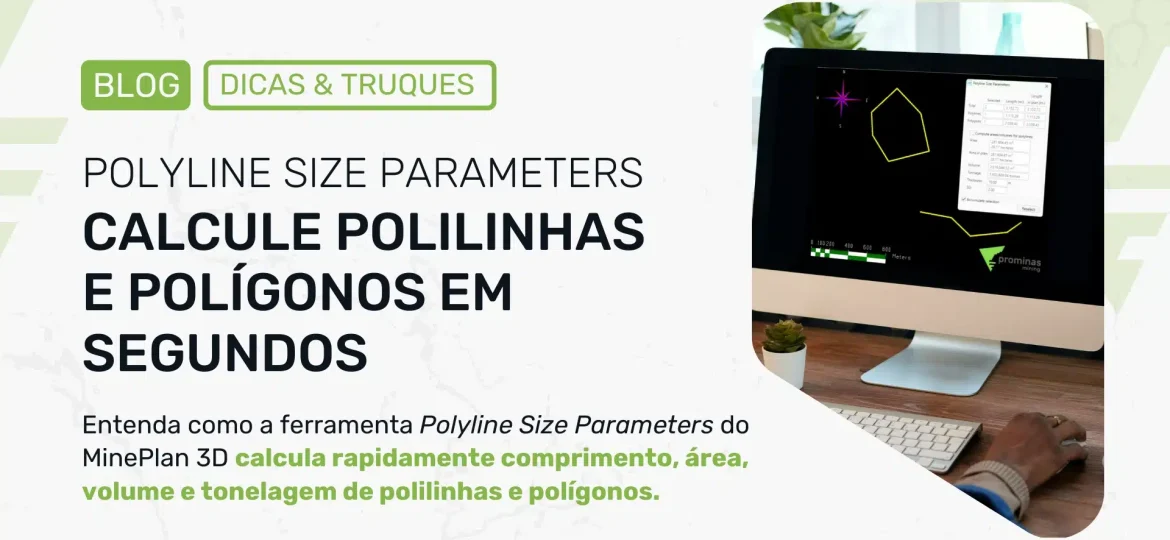In today's Tips & Tricks we are going to talk about how to perform blending using the MineSight Scheduler Optimizer (MSSO), creating mass restrictions, grade, materials and even generating restriction between grade ratios. All these parameters can be created in MSSO quickly and easily, generating an optimal operational sequencing for your mine in order to maximize your NPV!
MSSO generates long-term and short-term sequencing that solves optimization and blending problems. These sequences represent the most productive mining, obtaining results that reach the objectives within mass, geotechnical, equipment, economic, among others restrictions.
The project flowchart is customizable, with the pit, overburden and stock piles and the plant being determined as the user wishes. The MSSO will calculate the amount of material moved to its respective destination according to this flowchart. All this procedure is done in a visual and easy interface, which helps the user to reproduce the real flowchart of his project.


With the MSSO it is also possible to 'map' the 'materials' according to the user's preferences, choosing the destination(s) of each material for each period. This mapping is done through 'Material Mapping', which is an initial configuration, where the destinations of each material are determined (ore, sterile, oxidized, etc.). For example, the material 'Waste' will only be sent to the waste pile (Waste 1), while the material 'Ore' can be sent to stockpile 1 or 2 (Stockpiles 1 and 2).
Still through the 'Material Mapping', it is possible to facilitate the process of a future blending. From a mapping in which the high grade ore is destined to a certain stock pile (High Grade) and the low grade ore is sent to another pile (Low Grid).
After mapping the destinations in 'Material Mapping', the user can determine the quantity and content restrictions in each destination according to the specifications of his product. Such restrictions can be configured in the 'constraints' in various ways, as exemplified below:
- Tonnage: You can determine the maximum and minimum amount per period sent to a destination.

- Volume: You can determine the maximum and minimum volume per period sent to each destination according to the density of the material.

- Stockpile Reclaim: In this option, the user determines the amount of material that leaves the stockpile per period. For example, if your mine has a pile of high grade and another of low grade, you can determine the quantity that each pile will send to the plant, thus finding an ideal blending for your production.

- grids: You can perform a content restriction for each destination. In this way, it is possible to create stacks of varying grades in an easy and intuitive way. As per the image below, the MSSO will determine the optimal amount of retake in each stock to reach the target grade at the mill.

- materials: The user can determine the quantity sent of each material to the respective destinations. For example, it is possible to determine the maximum quantity sent to the plant of a certain type of material (oxidized ore, for example) and the minimum quantity of another type of ore, thus managing to blend its materials and achieve maximum of each type of ore in your mine.

- Ratios – Materials: It is possible to determine the ratio of the quantity of materials sent to the same destination or different destinations. If you have to respect a friable ore/compact ore ratio in your plant, for example, Ratios – Materials is the best solution.

In the example of the previous image, a ratio between 1.90 and 2.10 was established between the 'Ore' material and the 'Oxidized' material, directed to the stockpile. This means that MSSO will send approximately twice as much 'Ore' material to the stockpile as 'Oxidized' material.
- Ratios – In this option it is possible to determine the ratio between the content of elements or minerals in relation to one or more destinations.

The previous image showed a restriction between copper content and molybdenum content in the plant. This type of restriction can have several applications, from the ratio between two minerals of interest to the ratio between a mineral of interest and a contaminant mineral.
Based on the cubing performed in MSReserve, the quantity that must be produced of each material and its respective content can be calculated, so that a homogeneous production is achieved during the useful life of your enterprise.
The user also has the option of performing mining restrictions by phase. If a certain area needs to be plowed after another for material specification reasons, the user can create a restriction in which a certain phase can only be plowed after the end of another phase.

After determining the restrictions according to the specifications of his product, the user can run the MSSO, finding the best mining sequencing option for his enterprise according to his objective.
To maximize your NPV the user should just choose this option in 'Objectives' and the MSSO will perform the sequencing in a way that generates the best possible financial return.
![]()

MSSO is a robust and at the same time simple to use tool, where you can enter all the technical and economic parameters of your mine to find an optimal operational solution.
After the MSSO performs the calculations, the results are already generated in tables and graphs. The graphics are dynamic and can be changed by the user in a very simple way, and there is even the possibility of exporting the results to an external spreadsheet program.

BLENDING your ore has never been so easy! Achieve your goals, have a continuous and homogeneous production and maximize your profits, taking advantage of your reserves in the best possible way with MineSight Schedule Optimizer – MSSO.
To the next!!!




